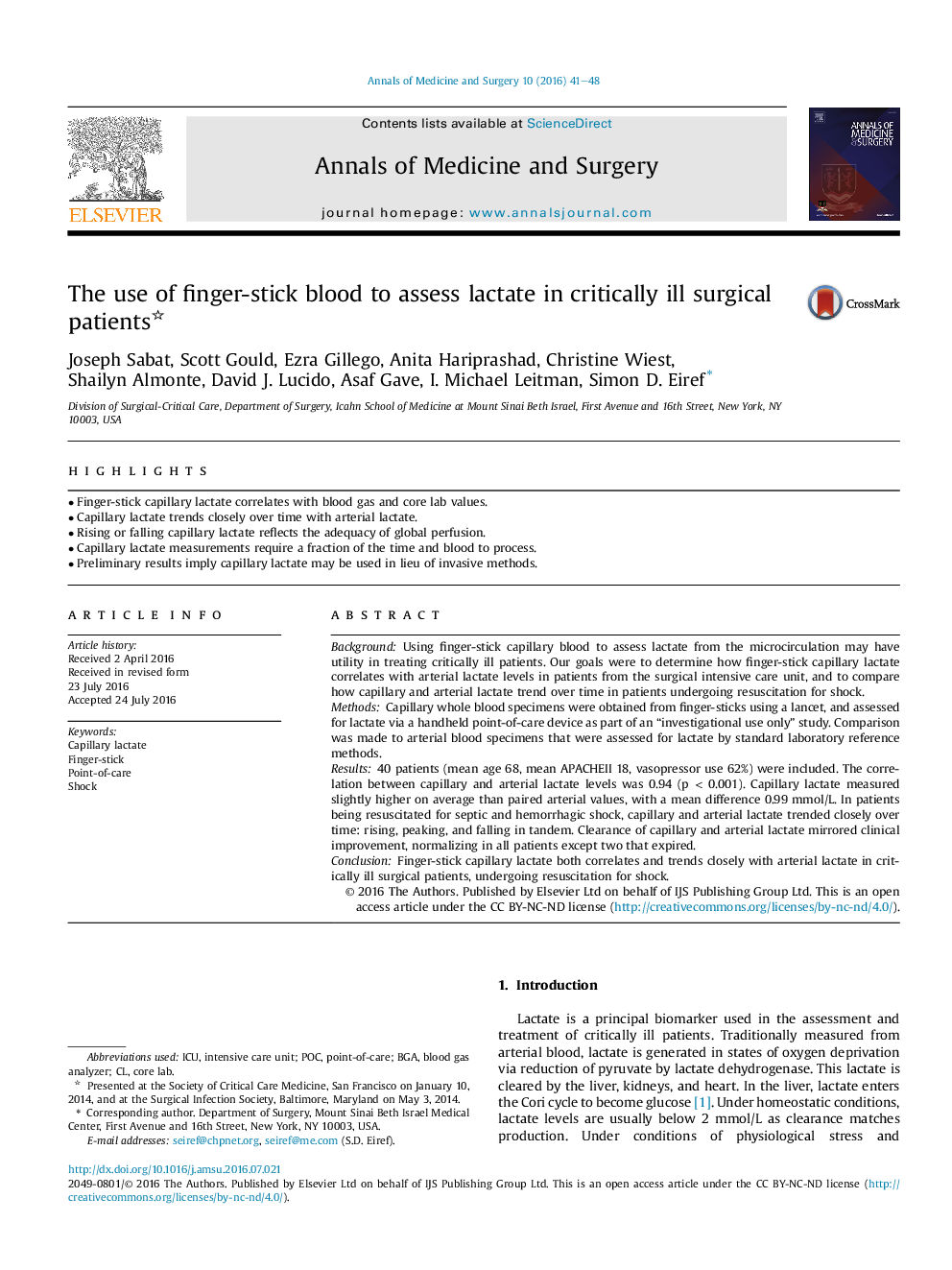| کد مقاله | کد نشریه | سال انتشار | مقاله انگلیسی | نسخه تمام متن |
|---|---|---|---|---|
| 4195121 | 1608918 | 2016 | 8 صفحه PDF | دانلود رایگان |
• Finger-stick capillary lactate correlates with blood gas and core lab values.
• Capillary lactate trends closely over time with arterial lactate.
• Rising or falling capillary lactate reflects the adequacy of global perfusion.
• Capillary lactate measurements require a fraction of the time and blood to process.
• Preliminary results imply capillary lactate may be used in lieu of invasive methods.
BackgroundUsing finger-stick capillary blood to assess lactate from the microcirculation may have utility in treating critically ill patients. Our goals were to determine how finger-stick capillary lactate correlates with arterial lactate levels in patients from the surgical intensive care unit, and to compare how capillary and arterial lactate trend over time in patients undergoing resuscitation for shock.MethodsCapillary whole blood specimens were obtained from finger-sticks using a lancet, and assessed for lactate via a handheld point-of-care device as part of an “investigational use only” study. Comparison was made to arterial blood specimens that were assessed for lactate by standard laboratory reference methods.Results40 patients (mean age 68, mean APACHEII 18, vasopressor use 62%) were included. The correlation between capillary and arterial lactate levels was 0.94 (p < 0.001). Capillary lactate measured slightly higher on average than paired arterial values, with a mean difference 0.99 mmol/L. In patients being resuscitated for septic and hemorrhagic shock, capillary and arterial lactate trended closely over time: rising, peaking, and falling in tandem. Clearance of capillary and arterial lactate mirrored clinical improvement, normalizing in all patients except two that expired.ConclusionFinger-stick capillary lactate both correlates and trends closely with arterial lactate in critically ill surgical patients, undergoing resuscitation for shock.
Journal: Annals of Medicine and Surgery - Volume 10, September 2016, Pages 41–48
